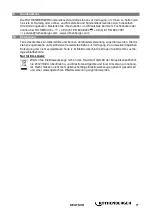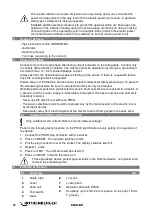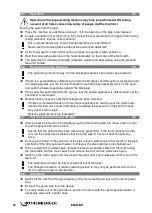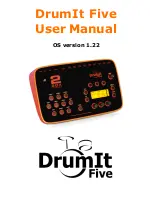
14
ENGLISH
g)
If devices are provided for the connection of dust extraction and collection facilities,
ensure these are connected and properly used.
Use of dust collection can reduce dust-
related hazards.
h)
Do not let familiarity gained from frequent use of tools allow you to become compla-
cent and ignore tool safety principles.
A careless action can cause severe injury within a
fraction of a second.
4) Power tool use and care
a)
Do not force the power tool. Use the correct power tool for your application.
The cor-
rect power tool will do the job better and safer at the rate for which it was designed.
b)
Do not use the power tool if the switch does not turn it on and off.
Any power tool that
cannot be controlled with the switch is dangerous and must be repaired.
c)
Disconnect the plug from the power source and/or remove the battery pack, if de-
tachable, from the power tool before making any adjustments, changing accessories,
or storing power tools.
Such preventive safety measures reduce the risk of starting the
power tool accidentally.
d)
Store idle power tools out of the reach of children and do not allow persons unfamil-
iar with the power tool or these instructions to operate the power tool.
Power tools are
dangerous in the hands of untrained users.
e)
Maintain power tools and accessories. Check for misalignment or binding of moving
parts, breakage of parts and any other condition that may affect the power tool’s op-
eration. If damaged, have the power tool repaired before use.
Many accidents are
caused by poorly maintained power tools.
f)
Keep cutting tools sharp and clean.
Properly maintained cutting tools with sharp cutting
edges are less likely to bind and are easier to control.
g)
Use the power tool, accessories and tool bits etc., in accordance with these instruc-
tions, taking into account the working conditions and the work to be performed.
Use
of the power tool for operations different from those intended could result in a hazardous sit-
uation.
h)
Keep handles and grasping surfaces dry, clean and free from oil and grease.
Slippery
handles and grasping surfaces do not allow for safe handling and control of the tool in unex-
pected situations.
5) Service
a)
Have your power tool serviced by a qualified repair person using only identical re-
placement parts.
This will ensure that the safety of the power tool is maintained.
1.2
Special safety instructions
Wear rubber boots (for insulation) when performing cleaning work.
Before inserting the plug into the electrical socket, make absolutely sure that the pipe cleaning
machine is switched to 0 or OFF.
Whenever using electrical devices, always observe the specified voltage and generally work with
a protective tube and safety gloves.
Choose the right tool for the clog and for the pipe diameter to be cleaned, in order to prevent the
tool from hooking into the clog and the spiral from ejecting from the pipe.
To prevent damage, use this machine and its accessories only to clean waste water pipes —
never chimneys, wells, etc.
To prevent damage to the pipes or pipe bends, do not modify tools by whetting them, etc…
Use a camera system to spot the cause of the pipe clog.
Only work on perfect lines installed according the “VDE regulations“.
The spirals must never run over the guide tube!
Mechanical pipe cleaning should always be undertaken from above in the direction of the stop
plug.
Ensure that no water taps leading to the pipe to be processed are actuated during the pipe
cleaning. Congestion can occur here!
Summary of Contents for RODRUM L
Page 3: ...Operating E Tool case removal D ...
Page 4: ...Spiral drum change 1 2 3 F ...
Page 7: ......
Page 209: ...NOTES ...



































